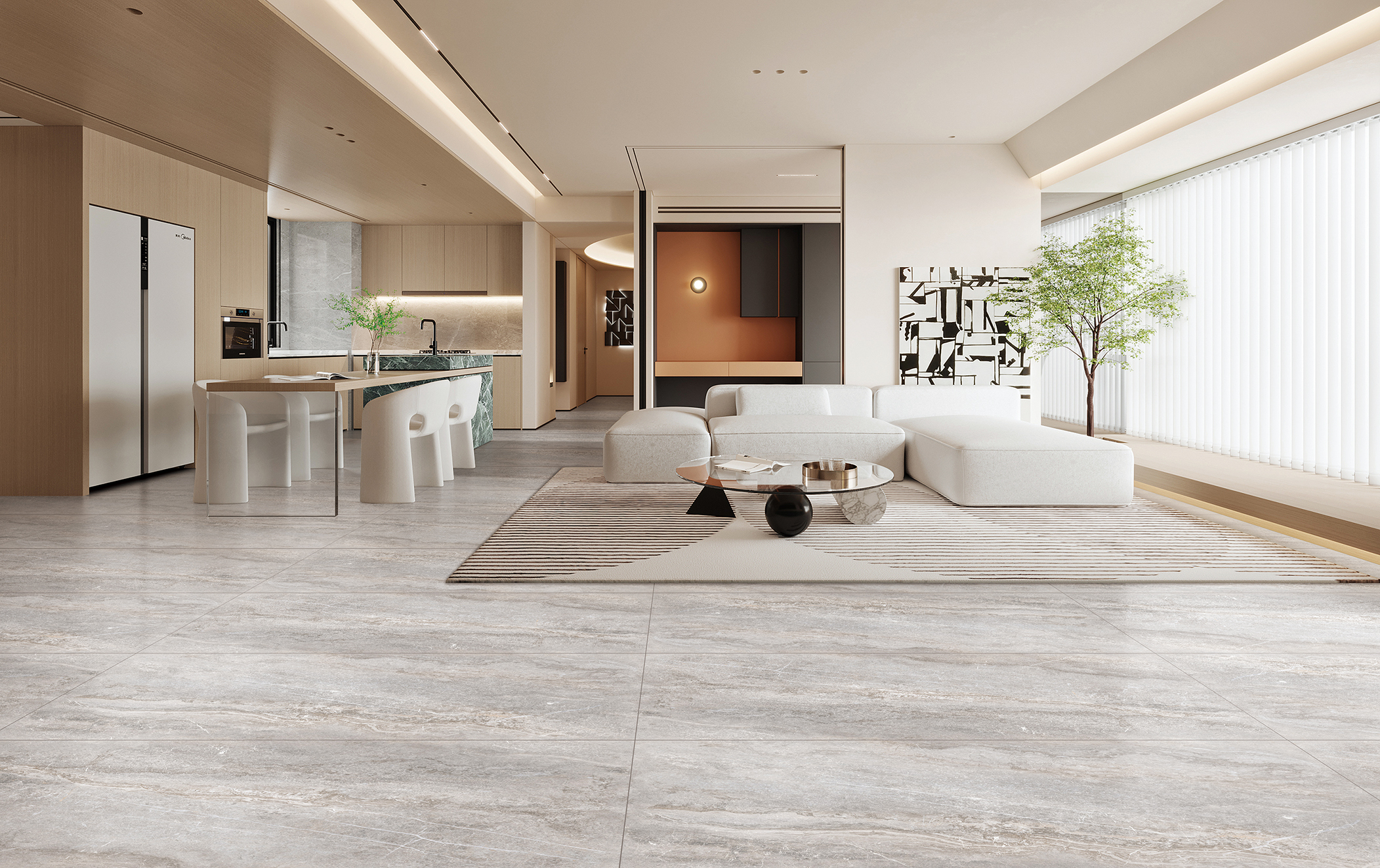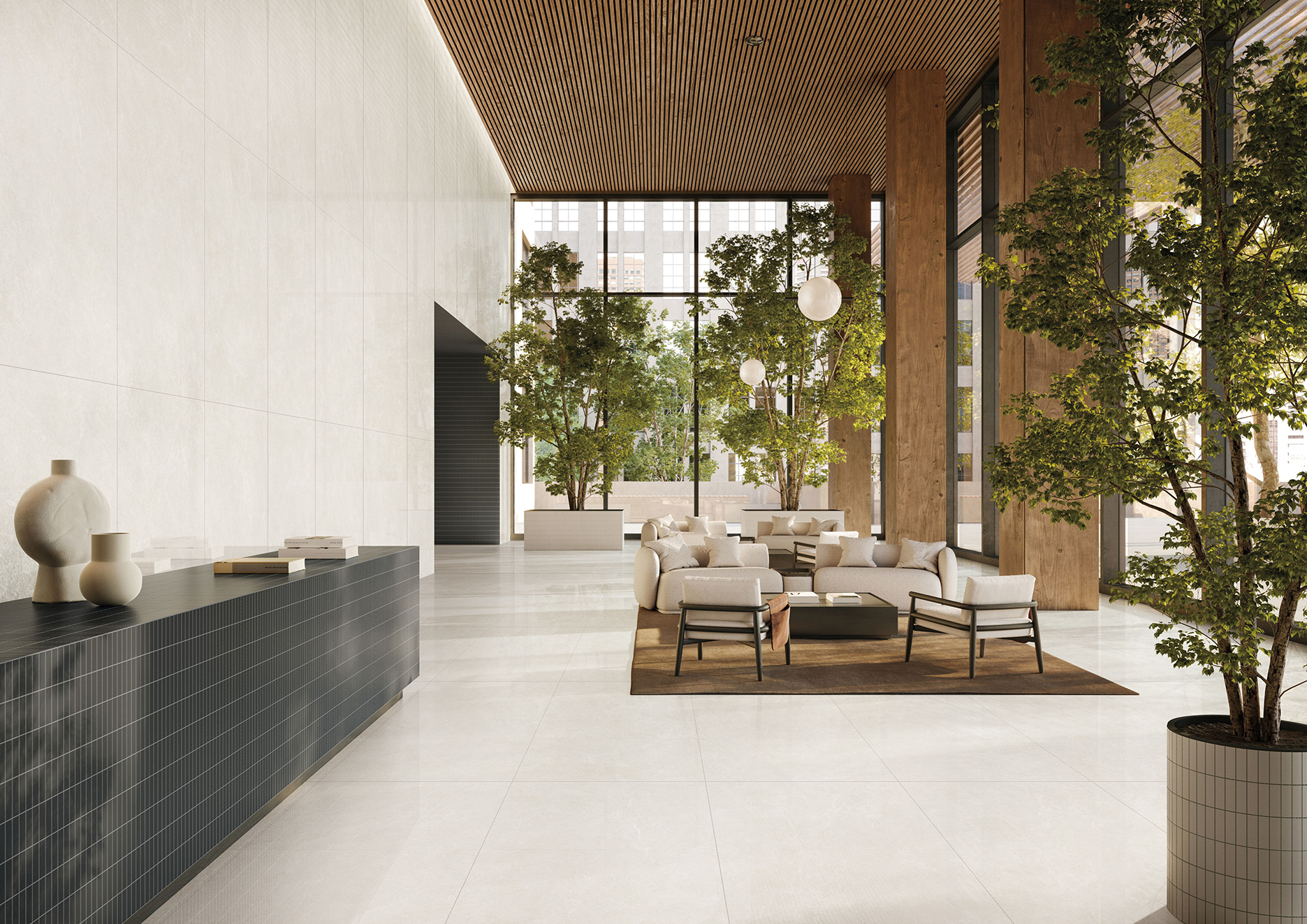
Tile Industry Embraces New Era of Quality Grading and Green Intelligent Manufacturing, Innovation Drives Response to Global Market Changes
The Chinese tile industry is currently undergoing a profound transformation. Driven by evolving national standards, the transition towards green and intelligent manufacturing, and changes in the international trade environment, the sector is steadily shifting from competition based on scale to a contest of quality and value, moving into a new stage of high-quality development.
Industry Standards Overhauled, Quality Grading Leads Consumption Shift
A industry-wide transformation, led by national standards, is underway. The GB/T 45817-2025 “Consumer Product Quality Grading – Ceramic Tiles” standard, set for official implementation on December 1st this year, categorizes tile quality for the first time into three clear grades—3A, 4A, and 5A—establishing a clear, quantifiable benchmark for “good tiles”. This standard imposes stricter requirements on key performance indicators such as surface flatness, water absorption uniformity, wear resistance, and anti-slip properties. For instance, high-grade tiles require roller marks to be controlled within 0.18 millimeters, a standard far exceeding that of traditional “first-class” products.
The implementation of the new national standard is expected to reshape the competitive landscape. For established companies that have consistently adhered to high production standards, the 5A rating serves as an “official certification” of their product quality, helping them build a “moat of quality” to gain a stronger advantage in the high-end market. Concurrently, meeting the new standard requires some enterprises to invest funds into production line technological upgrades, equipment improvements, and process optimization, posing a severe challenge for many small and medium-sized enterprises with weak technological foundations that rely on low-price competition. Industry analysis suggests the new standard will shift competition from a “price war” to a “value war,” accelerating the elimination of low-end capacity and market consolidation.
Global Stage Showcases Strength, Chinese Standards Go International
While the domestic market upgrades itself, the Chinese ceramic industry has also achieved a historic breakthrough in international standardization. In July of this year, the first international standard for ceramic tiles led by China, ISO 10545-23:2025 “Ceramic tiles — Part 23: Determination of elastic modulus for glazed and unglazed ceramic tiles, substrate and glaze layer,” was officially published. This standard provides crucial technical support for the manufacturing, quality control, and safe service performance of architectural ceramics, being particularly significant for the efficient processing and reliable application of large-format ceramic slabs. This marks a leap for China from “following” to “leading” in the international standardization of ceramic tiles, contributing Chinese expertise to global industry development.
Product Trends Diversify and Integrate, Balancing Design and Function
At the product innovation level, international tile trends are evolving towards greater color personalization, technological depth, and style integration. According to insights shared by industry experts at recent summits, warm tones will become the core of 2025 trends, with favored shades including beige, ivory, and soft white. Meanwhile, colors like pure blue, rich green, and soft pink are breaking through their role as “accent colors” to become main themes in design.
It is worth noting that small-format tiles are making a comeback. Compact sizes like 20x20mm and 75x30mm are being endowed with rich color and 3D pattern combinations, offering stronger rhythm and narrative potential for spatial design. Stylistically, wood-look tiles are returning with warmer tones and more detailed textures, while cement-effect products are shedding their stereotypical single-gray image through color innovation. Furthermore, the market share of high-end categories like slabs and functional tiles continues to grow, with products featuring antibacterial, anti-slip, and self-cleaning properties increasingly popular among consumers.
Green and Smart Transformation Accelerates, Building a Core of Sustainable Development
Facing national “Dual Carbon” goals and increasingly stringent environmental policies, greening and intelligentization have become essential for the survival and development of the tile industry. The national standard GB21252-2023 “Energy Consumption Limit per Unit Product of Architectural Sanitary Ceramics and Wear-Resistant Alumina Grinding Balls” sets clear tiered requirements for the energy consumption limits of operating, newly built, and renovated projects. This is driving leading enterprises to accelerate the construction of a new generation of smart factories, building comprehensive management and analysis intelligent platforms by introducing advanced technology and equipment, and fully adopting clean and renewable energy.
Leading smart factories in the industry have already achieved remarkable results in green practices. For example, some have built large-scale rooftop photovoltaic power stations generating over 9 million kWh annually, with PV power accounting for more than half of the total electricity consumption. Additionally, measures like utilizing wind-powered lighting systems, rainwater collection ponds, and using biomass fuel in spray drying towers are significantly reducing reliance on traditional energy and water resources. In solid waste management, some companies, leveraging their technical expertise, have achieved large-scale recycling of metallurgical slag, mine tailings, and urban mining resources, even finding pathways to utilize industrial residues from the new energy sector.
International Trade Environment Remains Challenging, Enterprises Actively Seek Solutions
In international trade, Chinese tile exports continue to face challenges. In August 2025, the U.S. Department of Commerce announced the final results of the first expedited sunset review of countervailing duties on ceramic tiles from China, maintaining a high countervailing duty rate of 358.81%. This rate virtually blocks the direct export path of Chinese tiles to the United States.
Confronted with a complex international trade environment, Chinese tile enterprises are seeking breakthroughs through market diversification and product value addition. On one hand, they are actively exploring markets in Belt and Road Initiative countries and RCEP member states. On the other hand, they are focusing on increasing the export proportion of high-value-added products like slabs, intelligent temperature-adjusting tiles, and electronic ceramics, aiming to circumvent trade barriers through technological upgrading and overseas localized production, thereby rebuilding international competitiveness.
Industry Events Highlight Vitality, Building Collaborative Platforms
Industry exhibitions serve as crucial windows for displaying innovation and fostering exchange and cooperation. The 2025 China (Beijing) International Premium Ceramics Expo, which opened in Beijing on October 30th, gathered premium ceramic products from home and abroad under the theme “Exquisite Porcelain, Beautiful Pottery, Celebrating a Prosperous Era”. The exhibition added two new themed sections: Smart Sanitary Ware & Building Ceramics, and the Special Ceramics Full Industry Chain, centrally showcasing the industry’s achievements in “high-end, intelligent, and green” development, and building a bridge for supply-demand and innovative exchange within the industry.
Future Outlook: Innovation and Synergy Leading the Industry Forward
Looking ahead, the Chinese tile industry will continue its journey amidst the waves of standard upgrades, technological integration, and Globalization 2.0. The new national standard and energy consumption limits will act as filters, channeling resources towards high-value areas. Corporate competition will increasingly extend to the comprehensive comparison of key product performance indicators and sustainable development capabilities like green production and energy saving. Guided by policies, driven by technological innovation, and fueled by consumption upgrades, the Chinese tile industry is poised to navigate through cyclical challenges, reshape the global competitive landscape, and realize the transition from a “manufacturing giant” to a “quality manufacturing powerhouse.”



